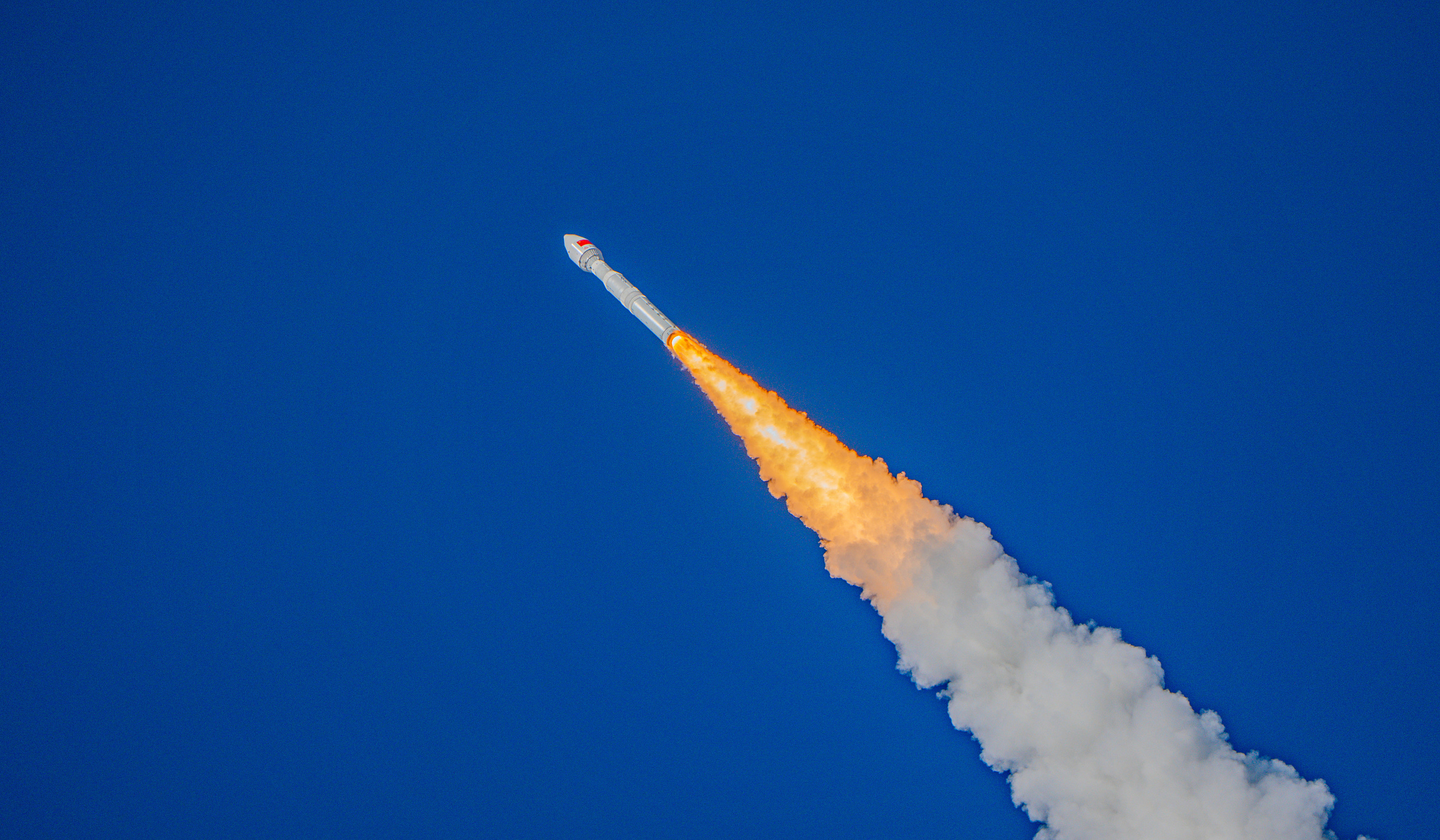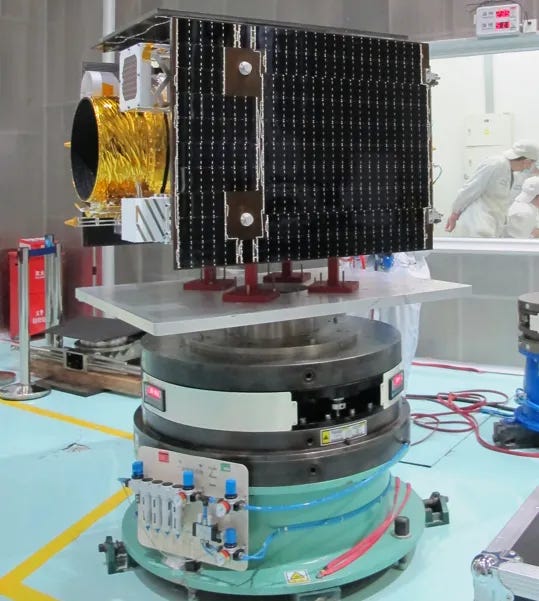Going International? [Kinetica-1 Y5]
CAS Space has delivered fifteen more satellites into orbit successfully.
The fifth Kinetica-1 mission blasted off from Launch Site 130 at the Jiuquan Satellite Launch Center at 12:03 pm China Standard Time, or 04:03 am Universal Coordinated Time, on November 11th.
Kinetica-1 carried fifteen satellites which were deployed to sun-synchronous orbit, for both Chinese and international customers.
Changguang Satellite Technology Co Ltd (长光卫星技术股份有限公司) had two Jilin-1 satellites delivered to orbit for this launch, with them being Jilin-1 Gaofen 05B (吉林一号高分05B) and Jilin-1 Pintai 02A03 (吉林一号平台02A03). Gaofen 05B is a second high-resolution imaging technology demonstration satellite ahead of large-scale production, unrelated to the government-owned Gaofen satellites. Pintai 02A03 is a high-resolution optical remote-sensing satellite that is expected to provide data for situational analysis, regional census for land resources and mineral development, as well as for smart city construction.
Six Yunyao-1 (云遥一号) satellites, numbered 31 through 36, were also onboard from Tianjin Yunyao Aerospace Technology (功将天津云遥宇航科) as part of the company’s meteorological satellite constellation. This constellation provides data for atmospheric temperature, humidity, pressure, and ionospheric electron density. Eventually, ninety satellites are planned to be in orbit assisting in improving weather forecasts.
Two satellites from Xi'an Zhongke Xiguang Aerospace Technology Co Ltd (西安中科西光航天科技) were also heading to orbit for this launch. The first of these was Xiguang-1 04 (西光壹号04), which is a high-resolution point source methane monitoring satellite, and also China’s first methane monitoring satellite. This satellite is expected to monitor methane emission changes and sources to assist in China’s transition toward carbon neutrality. Xiguang-1 05 (西光壹号05) is the second satellite and is a high-resolution hyperspectral remote sensing satellite that will be used to gather data for agricultural monitoring, mineral exploration, environmental monitoring, forest management, and urban planning.
Beijing Juntian Aerospace Technology Co Ltd’s (北京钧天航宇技术有限公) Tianyan-24 (天雁24) optical remote sensing satellite was also onboard. Tianyan-24 is stated as being the technical foundation for the development of next-generation low-cost modular satellites. The satellite will also be used for geological disaster monitoring, agricultural and forestry ecological assessment, and power facility emergency responses.
The international customer flying aboard Kinetica-1 was a remote sensing satellite for Oman, developed by the China Academy of Space Technology in just nine months. According to the developer, the spacecraft is called Omani Intelligent Remote Sensing Satellite-1 (阿曼智能遥感卫星一号) and has an optical camera onboard, with a panchromatic resolution of 1 meter and a multispectral resolution of 4 meters. Once commissioned in orbit, the satellite will be used for land surveying, forestry surveys, urban planning, and disaster monitoring.
Three Shiyan-26 (试验二十六号) satellites are also believed to be onboard. Shiyan satellites are technology demonstration spacecraft to demonstrate new capabilities in space.
The fifth flight of Kinetica-1 also debuted the vehicle’s 3.35-meter diameter payload fairing, which is 0.7 meters wider than the usual fairing. This fairing is believed to enable a wider variety of missions Kinetica-1 can perform to either sun-synchronous or low Earth orbit, should a single customer require the entirety of the rocket’s lift capability.
While at the 75th International Astronautical Congress in Italy, CAS Space spoke to SpaceNews and shared that they are looking to attract global customers. Liu Weipeng, CAS Space’s international marketing manager, said that the company’s rationale was as follows:
“There is lots of competition going on right now, and our perspective is that we have to have a really big market here [in China], but it’s not big enough for all these large companies,” — “So for a company like ourselves to grow, it’s important for us to expand to global clients”
In support of attracting global customers, CAS Space is one of a few companies to have official accounts on the Western internet, and part of a small few to regularly post. (You can find CAS Space on X under the username @cas_space).
For this year, one more Kinetica-1 launch is expected to occur. An increase in Kinetica-1’s cadence is also expected in 2025, along with the debut of the partially reusable Kinetica-2. Speaking to CGTN, it was stated that there could be between eight to ten launches in 2025.
This was the 5th launch of Kinetica-1 and for CAS Space. It was also the 54th launch from China in 2024.
Liftoff video via 航天五线谱 and CNSpaceflight on Weibo and X (formerly Twitter).
Check out the previous launch from CAS Space
What is Kinetica-1?
This section is for those less familiar with China's various commercial launch vehicles.
Kinetica-1 is CAS Space's first launch vehicle and consists of four stages, all burning solid fuel. CAS Space offers the ability to launch a single satellite to utilize all of the rocket's payload capacity, however more 'rideshare' missions occur for multiple satellites to be delivered in one launch.
The payload capacity of the launch vehicle is currently as follows:
2,000 kilograms to low Earth orbit
1,500 kilograms to a 500-kilometer sun-synchronous orbit
The first-stage is powered by a solid rocket booster that burns an unspecified solid fuel, generating 200 tons of thrust. The second-stage is also powered by a solid rocket booster, producing 110 tons of thrust with the same unidentified propellant. The-third stage, also using the undisclosed propellant, generates 110 tons of thrust. Finally, the fourth-stage is powered by another solid rocket booster, providing 8 tons of thrust with the same solid propellant.
On its launch pad, Kinetica-1 stands at 30 meters tall. The first two stages have a diameter of 2.65 meters, the fairing has a diameter of either 2.65 or 3.35 meters. When prepared for launch Kinetica-1 weighs a believed 135,000 kilograms.
So far Kinetica-1 has flown all of its missions from CAS Space’s launch facility at the Jiuquan Satellite Launch Center.






![Business is good for CAS Space [Kinetica-1 Y4]](https://substackcdn.com/image/fetch/w_1300,h_650,c_fill,f_auto,q_auto:good,fl_progressive:steep,g_auto/https%3A%2F%2Fsubstack-post-media.s3.amazonaws.com%2Fpublic%2Fimages%2Fb290cd04-2d72-4b5e-a116-d6835503f3c4_7008x4672.jpeg)
